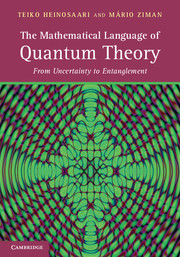Until now we have treated measurement apparatuses as devices taking quantum systems as their inputs and producing measurement outcomes as outputs. At this level of description, measurement apparatuses are fully described by observables, as discussed in Chapter 3. The measurement outcome distribution is determined by the particular input state and the observable describing the measurement device.
In this chapter we explore a mathematical framework suitable for the description of measurement apparatuses for which, in addition to the measurement outcomes, the measured systems are available after the measurement is performed. In such cases we may try to obtain more information on the system by measuring some other observable, or, perhaps by filtering out some preferred output states we may use our measurement apparatus as a preparator. Clearly, in this kind of situation we need a description of measurement apparatuses that is more detailed than that of observables. Therefore, two more refined concepts, measurement models and instruments, will be investigated in this chapter.
There is no customary name for a measurement model. As used here, it was first formalized in a general way by Ozawa [106], [107] who referred to the measurement process. A comprehensive general reference on quantum measurements is the monograph by Busch et al. [35], where measurement models are called premeasurements. Some other authors use the term indirect measurements.
Three levels of description of measurements
It is convenient to think of three levels of description when considering measurements.
